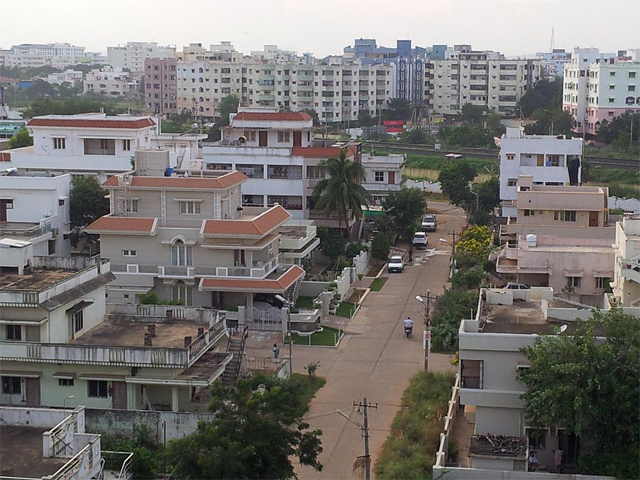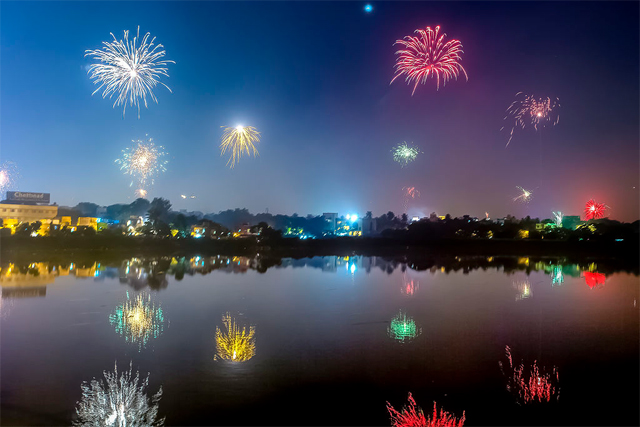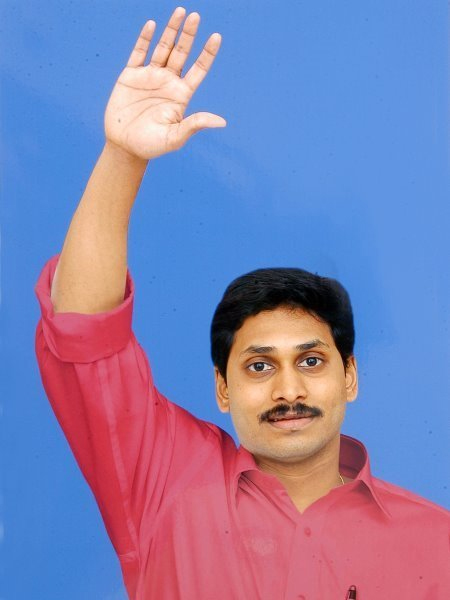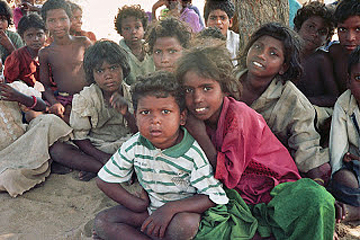An illegal firecracker manufacturing facility in the outskirts of the Indian city of Nellore exploded on the last day of 2016, killing three Yanadi workers and seriously injuring numerous others. The explosion occurred in Porlukatta, a suburb of Nellore, according to a police official.

Early news reports indicated that at least eight people sustained burns over 60 percent of their bodies and more than 15 people were injured. All of the inured persons were taken to hospitals in Nellore, which is the capital of the Nellore District of Andhra Pradesh. Various officials rushed to the scene to order an inquiry and to supervise relief efforts.
The news stories that followed on succeeding days provided additional details. One report indicated that Porlukatta is a center for the illegal manufacture of firecrackers, and that the majority of the workers are Yanadis. Many of them prepare the firecrackers in their own huts, though the article suggested they may not be fully aware of how dangerous the chemicals are. Apparently on Saturday the 31st at about 10:00 AM, a fire started that spread until it ignited a mass of fireworks in a storage building, causing the explosion. Six of the injured people were minors. The Collector, the chief executive of the district government, indicated that he had ordered teams to clamp down on illegal fireworks facilities throughout the district.
The defensive reactions by various officials prompts the skeptical observer to search back through the recent history. The Hindu, a major Indian newspaper, reported in September 2004 that an explosion at a fireworks facility in Porlukatta had killed three people and injured numerous others. Firms that manufacture fireworks in Nellore, according to that reporter, obtained supplies in Chennai, a major Indian metropolis about 100 miles to the south.

The manufacturing firms are supposed to obtain permits from various agencies, such as the police, fire, and labor departments, The Hindu reported, but the regulations are not enforced. Fireworks are used at popular festivities such as Diwali, also called Deepavali, the Indian festival of lights, and for other celebrations.
The Hindu provided additional details about the current tragedy throughout the week. On Sunday the paper identified all of the victims as being from the sub-tribe called the “Challa” Yanadi. The Yanadi workers receive daily wages starting at INR250 (US$3.68). Officials told the paper that the probable reasons for the explosion were that the explosive materials, most likely powered magnesium and phosphorous, may have been ignited by the slight heat from a drilling machine or from someone smoking nearby.
On January 2, the paper indicated that the death toll had risen to four people and many others were still in critical condition in the hospital. The government had decided to give the local families of deceased workers checks for INR500,000 (US$7,368). The paper quoted officials who blamed other officials for the negligence that had allowed the tragedy to happen. By the next day, January 3, the death toll had risen to six.

A prominent politician in the state of Andhra Pradesh, Y.S. Jaganmohan Reddy, who is often just referred to as Jagan, visited the blast site and the injured Yanadi in the hospital on Tuesday. He decried the fact that the state government—he is the leader of an opposition party—had not adopted any precautionary measures , despite the fact that similar accidents had occurred in the district in the past. “This negligence resulted in another explosion here, which claimed the lives of six persons,” he said. He also visited the slum where the Challa Yanadi workers and their families live. On January 5, The Hindu reported that two more victims of the blast had died, bringing, as of Thursday morning, the death toll up to eight, with nine others still in serious condition in the hospital. The same paper reported on January 9 that the death toll had risen to 15.
In addition to their focus on the facts regarding the tragedy, many of the news stories implied that the Challa Yanadi live in deplorable slum conditions and that they are exploited by powerful interests in the business communities and government agencies. The published literature provides some help in understanding their situation.
Raghaviah (1962) divided the Yanadi into two distinct subdivisions: the Manchi, the superior or better Yanadi, and the Challa, or inferior Yanadi, people who are so poor that they eat food discarded by others. According to an earlier writer, Thurston (1909), “Challa” meant one who eats discarded foods. Raghaviah pointed out that the Challas are treated as untouchable by the Manchi Yanadi. They drink water from separate wells; the Challas are not even allowed to touch the cooking pots or plates of the Manchi. They maintain separate social relationships and inter-group marriages are completely prohibited. Those caste barriers of untouchability were strictly maintained, at least in Raghaviah’s time.

Raghaviah described the Yanadi lower caste with distaste. “It is true that the Challas eat the leavings of the plate. One has to bend down one’s head in shame when groups of Yanadis of [the] Challa sub-caste swarm like flies around a house of a festive or marriage occasion for a snatch at the thrown-out leaf-plates containing the remnants of cast-away food (p.127).” He wrote that the practice was based on custom as well as poverty, though he felt that the practice of eating discarded foods was fading away.
A more recent book by Stanley Jaya Kumar (1995) indicated that the Yanadi were still generally subdivided into the Manchi and the Challa subgroups, and it is clear from the news stories last week that the disparaging term is still used.
A brief, but quite interesting YouTube video published on Sept. 2, 2016, effectively portrays the current plight of the Yanadi in Nellore. With subtitles in English, the video, titled “We the SubALTERNS,” depicts the ways upper-caste people exploit the Challa Yanadi. While it does not mention their work in dangerous manufacturing jobs, it does review the discrimination they have to endure on the fringes of Nellore society. However, the composure of the Yanadi man being interviewed during the 3:44 minute video substantiates the portrayal by Raghaviah more than 50 years ago of a dignified, peaceful group of people living in southeastern India who were much abused then and still are today.